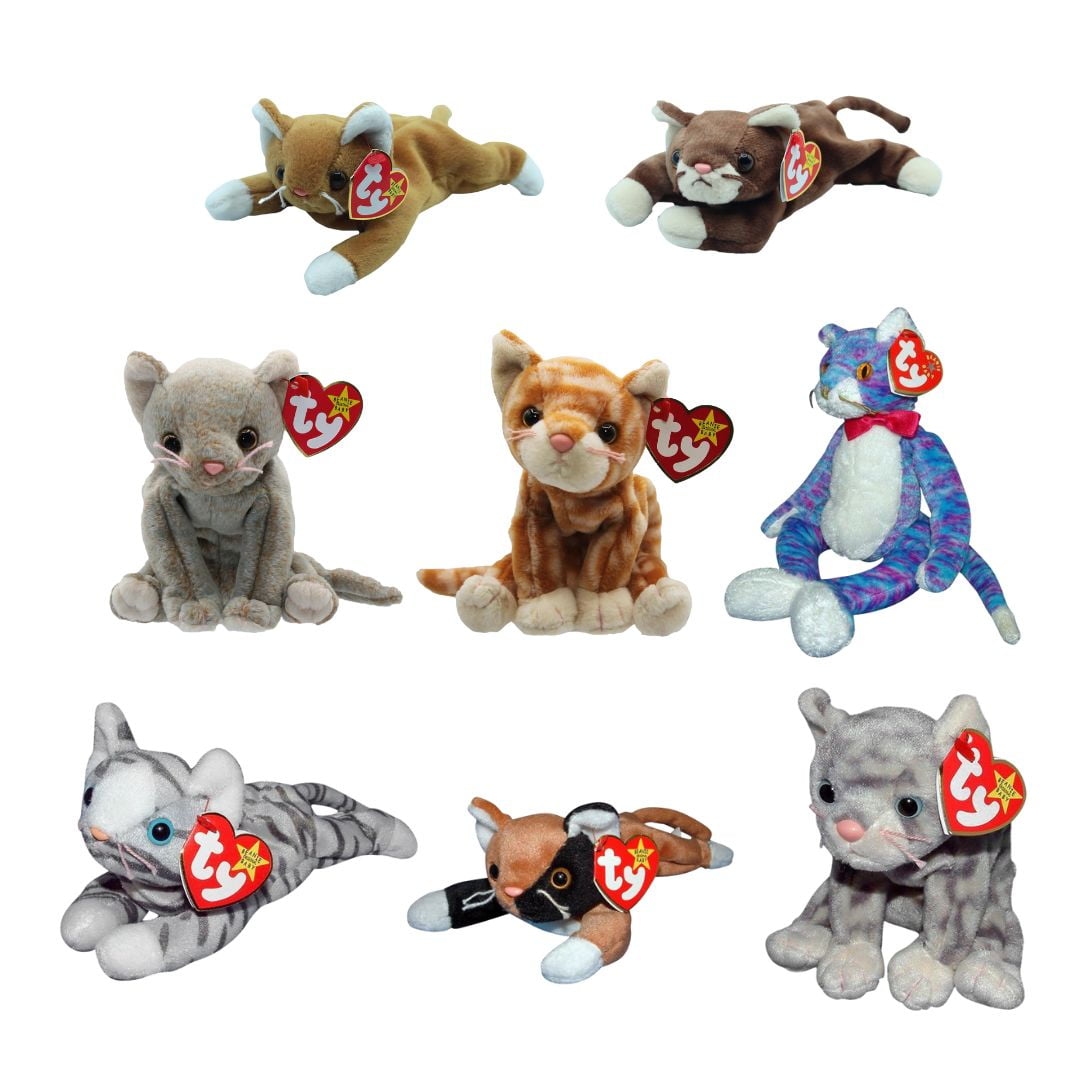
Beanie Babies: A Nostalgic Dive into the Plush Phenomenon
In the realm of childhood memories and collectible crazes, Beanie Babies reign supreme. These adorable plush toys, created by Ty Warner, captivated the hearts of millions in the 1990s and continue to evoke a sense of nostalgia today.
Origins and Creation
The genesis of Beanie Babies can be traced back to 1993, when Ty Warner, a businessman with a passion for stuffed animals, stumbled upon a prototype of a bean-filled plush bear at a gift show. Intrigued by its unique design, he purchased the rights and set out to create his own line of collectible toys.
Warner named his creations "Beanie Babies" due to their bean-filled bodies, which provided a soft and cuddly feel. The first batch of Beanie Babies, consisting of nine animals, was released in 1993. These included Peanut the Elephant, Chocolate the Moose, Squealer the Pig, Legs the Frog, Peace the Bear, Flash the Dolphin, Splash the Orca, Halo the Bear, and Pinchers the Lobster.
The Collectible Craze
Beanie Babies quickly gained popularity among collectors and children alike. Their unique designs, limited production runs, and Ty Warner’s clever marketing strategies fueled an unprecedented collectible craze. Collectors eagerly sought after rare and retired Beanie Babies, hoping to cash in on their potential value.
Ty Warner’s genius lay in his ability to create a sense of exclusivity and anticipation around his products. He limited the production of each Beanie Baby, often retiring them after a short period of time. This scarcity drove up demand and created a frenzy among collectors.
The Ty Phenomenon
As the Beanie Baby craze reached its peak, Ty Warner became a household name. His company, Ty Inc., grew exponentially, making him one of the wealthiest individuals in the United States. The Beanie Baby phenomenon spawned a vast array of merchandise, including books, clothing, and accessories.
Ty Warner’s marketing prowess extended beyond traditional advertising. He employed a grassroots approach, encouraging collectors to form clubs and share their passion for Beanie Babies. This community-building strategy further fueled the craze and created a loyal following.
The Decline and Legacy
The Beanie Baby craze reached its zenith in the mid-1990s, but it eventually began to decline. Overproduction and a saturated market led to a drop in value, and collectors began to lose interest.
Despite the decline in popularity, Beanie Babies remain a beloved collectible for many. They evoke fond memories of childhood and serve as a reminder of the cultural phenomenon that swept the nation.
Cultural Impact
Beanie Babies had a profound impact on American culture. They became a symbol of the 1990s, representing the era’s consumerism and collectible craze. The toys also played a role in shaping the childhood experiences of millions of children.
Beanie Babies have been featured in popular culture, including television shows, movies, and books. They have also been the subject of academic studies, exploring their impact on consumer behavior and childhood development.
The Ty Beanie Babies Collection
Over the years, Ty Inc. has released hundreds of different Beanie Babies, each with its own unique design and personality. Some of the most popular and valuable Beanie Babies include:
- Princess Diana Bear: Released in 1997 to commemorate the late Princess Diana, this Beanie Baby was an instant hit and is one of the most sought-after collectibles.
- Peace Bear: The first Beanie Baby ever created, Peace Bear remains a classic and is highly valued by collectors.
- Peanut the Elephant: One of the original nine Beanie Babies, Peanut is a beloved character and is often considered the most iconic Beanie Baby.
- Erin the Bear: Released in 1997 to celebrate St. Patrick’s Day, Erin is a popular Beanie Baby with a distinctive green fur.
- Valentino Bear: Named after the famous fashion designer, Valentino Bear is a stylish and collectible Beanie Baby.
Collecting Beanie Babies
Collecting Beanie Babies can be a rewarding and enjoyable hobby. However, it is important to approach collecting with caution and to be aware of the potential risks.
- Research: Before you start collecting, do your research and learn about the different Beanie Babies, their rarity, and their value.
- Set a budget: Determine how much you are willing to spend on Beanie Babies and stick to your budget.
- Buy from reputable sources: Avoid buying Beanie Babies from unauthorized sellers or online auctions.
- Store your collection properly: Keep your Beanie Babies in a cool, dry place away from direct sunlight.
- Be aware of fakes: There are many counterfeit Beanie Babies on the market. Be sure to inspect any Beanie Baby you are considering purchasing carefully.
Conclusion
Beanie Babies have left an enduring mark on American culture. These adorable plush toys have brought joy to millions of children and sparked a collectible craze that continues to this day. While the Beanie Baby phenomenon may have reached its peak in the 1990s, these beloved toys remain a nostalgic reminder of a simpler time.
